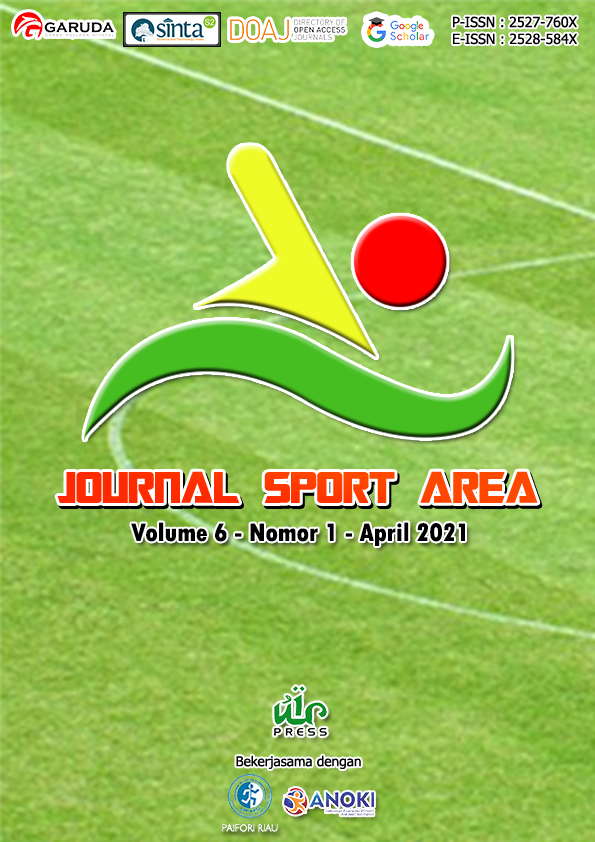Paralympic movement in Malaysia: The achievement of high-performance para sports
Keywords:
Paralympic movement, training, medals, para sportsAbstract
The article elaborates on the achievement of the Malaysian athletes with disabilities locally and also in international scenes. Malaysian athletes start to participate in international competition since 1962, and local games had been organized back in 1982 with the introduction of the Paralympic Games. The article also illustrates the medal achievement where Malaysian contingent achieved a total of 1700 medals at the ASEAN Para Games from 2001-2017. In FESPIC and Asian Para Games, a total of 582 medals was won from the year 1982-2018. At the FESPIC and Asian Youth Para Games, a total of 189 medals won from the year 2003-2017. The highest achievement came from the Paralympic games as Malaysian won 11 medals in total from the year 1962-2016. More need to be done to establish para sports in Malaysia with the support of every parties including the government and the media.
Downloads
References
Abdullah, N. M., Ampofo-Boateng, K., & Zawi, M. K. (2008). Coaching athletes with disabilities: General principles for appropriate training methodology. ISN Bulletin, 1(2), 51-58.
Bailey, S. (2008). Athlete first. A history of the paralympic movement. John Wiley & Sons.
Brazuna, M. R., & Mauerberg-deCastro, E. (2001). A Trajetória do Atleta Portador de Deficiência Física no Esporte Adaptado de Rendimento. Uma Revisão da Literatura (The trajectory of the athlete with physical disability in the elite adapted sport . A review of the literature). Motriz J, 7(2), 115–123.
Brittain, I. (2010). Rehabilitation of military victims of violent conflict through the medium of sport, From Victim to Survivor: responding to the trauma of conflict. Coventry Cathedral one-day workshop on 10 November.
Brittain, I. (2012). The Paralympic Games: from a rehabilitation exercise to elite sport (and back again?). International Journal of Therapy and Rehabilitation, 19(9).
Chang, I. Y., & Crossman, J. (2009). 'When there is a will, there is a way': A quantitative comparison of the newspaper coverage of the 2004 Summer Paralympic and Olympic Games. International Journal of Applied Sports Sciences, 21(2), 16–34.
Chang, I. Y., Crossman, J., Taylor, J., & Walker, D. (2011). One World, One Dream: A qualitative comparison of the newspaper coverage of the 2008 Olympic and Paralympic Games. International Journal of Sport Communication, 4, 26–49.
Doll-Tepper, G. (2002). Integrativer Behindertensport – Entwicklungen und Perspektiven. Sport Ohne Barrieren, 15–26.
Figott, A., & Collins, D. (2004). Eliminating the dichotomy between theory and practice in talent identification and development: Considering the role of psychology. Journal of Sports Sciences, 22, 395–408. https://doi.org/10.1080/02640410410001675324
Flindall, R. A. (2018). A Paralympic legacy? British newspaper representations of the Paralympic movement during the 2018 PyeongChang Winter Paralympic Games. Diagoras: International Academic Journal on Olympic Studies, 2, 145-172.
Guttmann, L. (1949). The Annual Stoke Mandeville Games. The Cord, 3(24).
Howe, P. D. (2008). From inside the newsroom: Paralympic media and theproduction'of elite disability. International Review for the Sociology of Sport, 43(2), 135-150.
Innenmoser, J. (2002). Bewegung, Spiel und Sport mit Körperbehinderten–Breiten-, Freizeit-, Leistungs-und Rehabilitationssport in angeleiteter, selbstverantwortlicher Gestaltung. Facetten Des Sports Behinderter Menschen. Pädagogische Und Didaktische Grundlagen, 11–83.
Jennings, A. (1996). The New Lords of the Rings. Simon and Schuster.
Jee, Y. S. (2018). Participating in the Paralympic Games through exercise rehabilitation for individuals with disabilities. Journal of exercise rehabilitation, 14(2), 158. http://dx.doi.org/10.12965/jer.1836188.094
Keuther, D. (2000). Zur Bedeutung des Leistungssports im Deutschen Behinderten Sport verband & National Paralympic Committee Germany. In V. Scheid (Hrsg.), Behindertensport – Wege zur Leistung. Optimierung der Leistungsentwicklung im Behindertensport im Sinne der Rehabilitat. Meyer & Meyer.
Lenskyj, H., & Wagg, S. (2012). The Palgrave Handbook of Olympic Studies. Macmillan Publishers Limited.
Mauerberg-deCastro, E., & Campbell, D. F. (2016). The global reality of the Paralympic movement: Challenges and opportunities in disability sports. Motriz, Rio Claro, 22(3), 111–123. http://dx.doi.org/10.1590/S1980-6574201600030001
Thompson, W. R., Vanlandewijck, Y. C. (2013). Science and the Paralympic movement. British Journal of Sports Medicine (BJSM), 47, 811. http://dx.doi.org/10.1136/bjsports-2013-092705
Quade, K. (2000). Nachwuchsförderung–Wie kommen Behinderte zum Leistungsspor. Behindertensport–Wege Zur Leistung, 23–24.
Reinecke, T., & Reiff, S. (2002). Paralympics: celebrating sporting excellence of athletes with a disability. ICSSPE Bulletin.
Schantz, O. J., & Gilbert, K. (2001). An Ideal Misconstrued: Newspaper coverage of the Atlanta Paralympic Games in France and Germany. Sociology of Sport Journal, 18, 69–94.
Scheid, V., Kuckuck, R., & Simen, J. (2000). Ziele, Anforderungen und Gegebenheiten im Leistungssport Behinderter–Zwischenbericht eines Forschungsprojekt. Behindertensport–Wege Zur Leistung, 187-204.
Thomas, N. & Smith, A. (2009). Disability, sport and society: An introduction. London, UK: Routledge.
Published
How to Cite
Issue
Section
This is an open-access article distributed under the terms of the Creative Commons Attribution-ShareAlike 4.0 International License which permits unrestricted use, distribution, and reproduction in any medium. Copyrights of all materials published in Journal Sport Area are freely available without charge to users or / institution. Users are allowed to read, download, copy, distribute, search, or link to full-text articles in this journal without asking by giving appropriate credit, provide a link to the license, and indicate if changes were made. All of the remix, transform, or build upon the material must distribute the contributions under the same license as the original.
Accepted 2021-01-15
Published 2021-02-09












